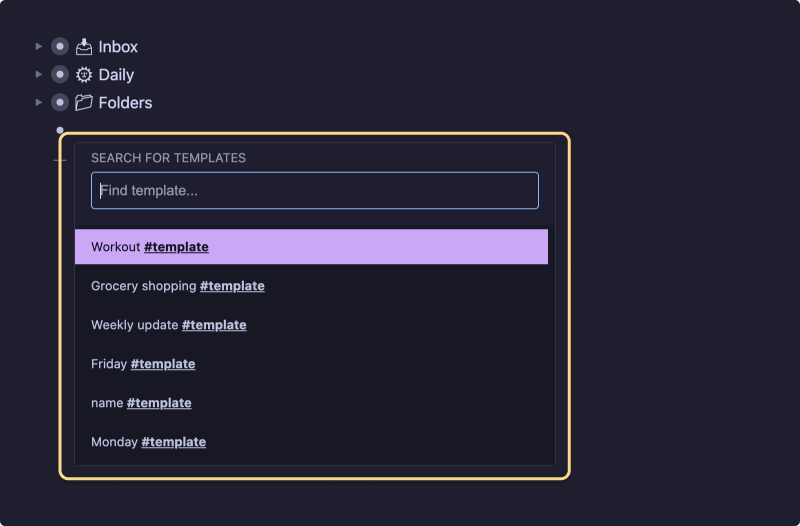Templates in Workflowy help you save time and stay consistent by reusing structures you rely on.
Whether it’s a meeting agenda, weekly planner, or project checklist, you can turn any set of bullets into a template. J
ust duplicate or mirror it whenever you need it - no need to start from scratch.
Templates keep your workflows fast, repeatable, and tailored to how you work.
There are two ways to turn an item and its contents into a template.
The first way is to add the hashtag '#template' to the item, and the second way is to use the item menu.
1. Add the '#template' tag to the item
2. Collapse the item
3. Click the ’New …’ button to create a blank template

You can edit a template at any time.
Note: Removing the '#template' tag will turn the item back into a regular item.
1. Expand the the template item to view its contents
2. Edit the contents of the template or the template name
3. Collapse the item

You can insert any template in your account with the 'Add from template' slash command. This slash command will search your entire account for all items with the #template tag.
1. Place your cursor where you want to insert a template
2. Type '/add from template' or simply '/template' and hit enter to select the slash command
3. Search for your desired template
4. Select it to insert it

/template or /add from template to insert structures instantly while writing. Pair with formatting commands like /h1 or /todo to keep every instance clean and ready to use.